UPDATED REVIEW – May 1, 2023 | Casio AP-710 Celviano Digital Piano for 2023 | LOWER PRICE HERE – The Casio company produces a line of digital pianos under $3000 called the Celviano Series traditional digital pianos. The top of the line in this series is called the AP-710 ($2799 internet discount price) which is what I am reviewing here, and under this model is the lower price AP-470 and AP-270 which I have reviewed elsewhere. The AP-710 is only available for sale at selected Casio piano stores and internet dealers in the US. This is a very interesting model in my opinion because it gets its piano “sound engine” and functionality from the higher priced Casio Grand Hybrid GP-310 ($4299). But the AP-710 is in a different cabinet with a different internal speaker system and user interface and a completely different key action than the GP-310. Nevertheless, it offers a number of features from its much higher priced brother but is in a much lower price range…which is a good thing.
INITIAL THOUGHTS
However, when it comes to how this piano plays in terms of overall piano playing realism including key action movement and response, realistic stereo piano sound, dynamic range, tonal articulation, pedaling authenticity response, and sustain-decay time, this model is impressive. Also, the way its powerful internal speaker system projects the sound, and the design of the cabinet and bench, helps make the Casio AP-710 a big winner between the $2500 and $3000 price range, especially if you want to focus on “piano playing” and have a very enjoyable experience doing that.
The important features in the AP-710 include an upgraded triple sensor synthetic ivory & ebony very responsive key action, an intuitive LCD display screen placed in the center of the piano above the keyboard to make it easier to see, and an adjustable matching bench. In addition to those things, the internal speaker system in the AP-710 is also the upgraded and includes 6 speakers (far more than any other brand under $3000) going through a total of 60 watts of stereo power. This newer model also has a new matte black cabinet finish with a beautiful texture to it that gives it a more elegant appearance than any of the Celviano models below it.
At $2799 internet selling price, the Casio AP-710’s biggest competitor is the Yamaha Clavinova CLP-735 which has an internet discount price of $2899 based on the Yamaha advertised web site price. I mention this because the Yamaha company certainly has a

great name in pianos as they are famous for acoustic upright and grand pianos as well as digital pianos. In fact, the Yamaha name would be more popular than Casio for that reason alone…that they make real pianos and have done so for years.
GRAND PIANO SOUND TECHNOLOGY
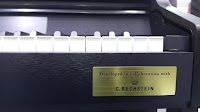
The Casio AP-710 has a custom piano sound chip built in with over 12 different acoustic piano sounds including the same high quality sound samples from their more expensive Grand Hybrid digital pianos which start at $4299 price. Those piano sounds come from 3 distinct grand pianos which include the German Steinway Hamburg Concert Grand Piano, the Bosendorfer Viennese Austrian concert grand Piano, and the Bechstein Berlin, Germany concert grand Piano. The Bechstein piano company in Germany, in conjunction with the Casio company, helped to produce the new piano sound samples in the AP-710 including the very impressive European Bechstein 9′ concert grand piano which no other digital piano has.
CASIO AP-710 VS YAMAHA ARIUS & CLAVINOVA SOUND

The competitive Yamaha Clavinova CLP-735 ($2899) offers 2 distinct piano samples from the Japanese Yamaha Concert Grand and the Bosendorfer Austrian concert grand both of which are great pianos. Although I do like the Yamaha sampled acoustic grand and Bosendorfer sampled grand quite a bit, the Casio Celviano AP-710 Steinway sound, Bosendorfer sound, and Bechstein stereo sampled grand piano sounds are just as pleasing and realistic to my ears and the Steinway & Bechstein grand piano sounds of Germany are at a much higher level of authenticity. Yamaha does not use a Steinway or Bechstein piano
sample because the Steinway and Bechstein grand piano companies are its competition, and instead Yamaha has their own Yamaha grand sampled sound. Also, the Yamaha company coincidentally owns the Bosendorfer grand piano company so that’s why they do not mind putting that piano sound in their digital pianos. Makes sense to me.
POLYPHONY

The Casio AP-710 has 256 notes of polyphony processing power as does the Yamaha CLP-735 and a few other piano brands and models, which is the most polyphony power offered in a sampled sound digital piano. the 256-note polyphony sound chip is more than enough to handle complex musical scores and passages and also allows the player to combine 2 sounds layered together such as piano &strings, etc for an even more beautiful piano playing sound experience.
CASIO AP-710 COMPARISON TO YAMAHA – Continued

But one of the things that noticeably separates the Casio AP-710 from the Yamaha CLP-735 and all other vertical cabinet style digital pianos in this price range is the adjustable open top lid and the 6-speaker system. If you look closely at the pictures of the AP-710, you’ll notice that the lid can open and be propped up to allow the piano sound to also come up and out towards the player as opposed to the sound staying
more inside the piano like in the Yamaha CLP-735. In fact, the Yamaha internal speaker system only has 2 speakers, although they are slightly larger than the main speakers in the AP-710. But the AP-710 has 6 total speakers with much better sound dispersion as I mentioned (4 mains and 2 tweeters) along with the lid opening system like a little mini grand piano, so the sound disbursement in the AP-710 is very impressive in its price range and it sounds great based on all my playing experience time on it. If you do not want the top lid to be opened then it can remain flat like it would be regular digital pianos. Of course none of these piano cabinets in this price range or even in higher price ranges for all of the top brands are actual solid core wood or have actual wood veneers. All cabinet surfaces are imitation wood grain over MDF board which is how almost all digital piano cabinets are made these days.
AP-710 KEY ACTION
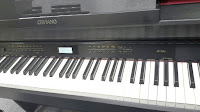
Key action is very important in a digital piano and in fact is the most important feature in any digital piano in my opinion, followed by piano sound and pedaling. The key action in the AP-710 allows for a more natural piano playing experience with regard to key weight, resistance, response, and overall key movement as compared to other piano key actions. I like the AP-710 key action very much and it also has new upgraded synthetic ivory & ebony
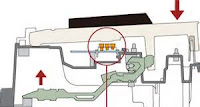
keytops which simulate the old grand piano key feel when the keys were made from real elephant ivory and real ebony wood many years ago before those materials were banned from being used on consumer products like pianos. The synthetic ivory and ebony key surfaces also help absorb sweat from the fingers, and that’s a good thing especially if you have sweaty fingers.
One of the main reasons I like the more natural key weight and key movement better on the Casio AP-710 is because it takes less effort to press the keys down as compared to many of the other digital pianos in this price range. In fact, this AP-710 is very close to the faster moving and more responsive up and down key movement of a real acoustic grand piano, and I have played hundreds of top name acoustic grand pianos so I know exactly the way keys should work and how they should move.
As an example, on the Yamaha Arius YDP-184 which is $2399, the key action movement is noticeably heavy and stiff (almost 90 grams of touch/down-weight), especially when playing the keys a bit softer and more lightly. In contrast the Casio AP-710 is 58 grams of static touch-weight. A real top name acoustic grand piano averages around 55 grams of touch-weight when pressing down the key (measured at middle C).
PEDALING

Piano pedaling is also an important aspect of any good piano and the
Casio AP-710 is no exception. The pedaling offers half-damper control for
variable sustain amount and duration of time. The piano pedaling also
triggers damper resonance which is when the dampers in a real piano are
off the strings and there is natural resonation of the strings occurring
along with the note that is played. Casio has recreated this experience
in the much lower priced Celviano AP-470 and it certainly is nice to have for those who are used to a real piano. The middle sostenuto pedal and left soft pedal
also work like a real piano and give people the added benefit of
reproducing the functionality of those pedals as well, although the
right damper sustain pedal is the primary pedal used more than 90% of
the time for most recreational piano players.
What really impressed me about the AP-710 pedaling was how rich, resonant, and long the sustain-decay time was on this model. On prior Casio digital pianos as well as other brands and models, the amount and length of the sustain was fairly short as compared to a real piano. Not so on the AP-710. The amount of sustain you get and the way it decays and the richness of that sustain when you are holding notes down or using your sustain pedal is very impressive and definitely added to the beauty of the piano playing experience that I had on it. The sustain effect was similar to what I get in a real grand piano. That was a very nice surprise and one that made me appreciate this piano even more than I already did.
CASIO COMPANY HISTORY
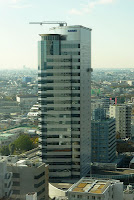
The Casio company has its worldwide
headquarters in Tokyo, Japan (left
pic) and has been producing digital pianos for over 40 years. They also
produce keyboards, pro synthesizers, as well as being famous for
calculators, advanced digital cameras, sports & consumer watches,
advanced digital technology for communication devices, and some very
impressive new digital computer technology. Casio produces their own
computer chips and proprietary micro technology and is able to do it at a
fraction of the cost of some of it’s biggest competitors and that is
why
Casio tends to have lower prices than many competitors.
lower
quality and think you need to spend a lot more money or get a “name brand” in pianos to get
something really good. However, in my opinion, this latest model Casio
AP-710 is
very impressive for its lower price and easily competes with the other
popular digital piano brands including Yamaha (as I mentioned), Roland, and Kawai for
features, cabinet construction & style, and overall piano playing
experience realism.
AUDIO WAV FILE/MIDI RECORDING & PLAYBACK
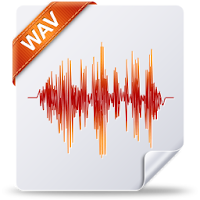
Another
impressive feature to me is the fact that Casio has included “wav file”
audio recording in this model. What that means is that you can record
yourself as an audio recording (CD quality) and save it to a USB
flashdrive in the piano. Then you can take that recording in the
flashdrive and plug it into your computer and email that song to your
friends and relatives to let them hear it on their computer just as you
played it!
programs for music education, composing, song arranging, etc for further
musical interaction and even turn the wav file recording into an MP3 to
play as an iTune on your iPad or iPod. The other major brands such as
Roland, Kawai, or Yamaha does not have this feature in this price range.
Another recording feature that is very useful and I use it in my
teaching studio, is the ability to record right and left hand playing
independently on 2 separate MIDI recording tracks and then play back
both hands simultaneously.
piano students to practice and record one hand and then play that
recording back while they play the other hand “live” along with the
recording. It’s like having your teacher there playing along with you to
give you help in understanding your rhythm and timing better and it’s
also more fun to practice this way.
other song recordings you have done to a USB flashdrive for storage so
you can come back later and work on and play along with those pieces
again.
USER DISPLAY SCREEN & OTHER FEATURES
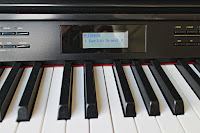
The Bechstein-Casio Grand Hybrid pianos, which are the next models up, have their exclusive full length wood key action that are quite a bit more money and they start at $4299 with the GP-310 model. But those pianos offer this actual all wood “grand piano” hammer action with real moving synthetic resin hammers that move up & down like grand piano hammers do. The AP-710 offers the identical digital digital features and grand piano sounds as the higher priced GP-310 does with the exception of the GP-310 having a larger display screen, more audio power, the wood key action (very expensive to produce) and a different cabinet.

personally like the control panel and display screen of the Casio AP-710 over the Yamaha and a few other models because if you notice the photos of these pianos, the Yamaha display screens are over to the left side of the keyboard and are a bit more difficult to use and see because of their location since you have to reach over the keys to get to the buttons…assuming you are right-handed like me. The AP-710 control panel and display screen is above the keys in front of the player for easy use, easy to see position of the display screen, and intuitive buttons which better access the piano sounds and functions of the AP-710.
A few other very cool features of the AP-710 include a new music library that consists of 10 full orchestra classical songs (plus more you can download from an internet site) which you can play along with using the piano sounds in the piano. The 10 orchestral songs are in an audio wav format (recorded from live orchestra) and
sounds just like a real recording of the instruments as you would find on a regular CD recording of an orchestra. These new songs are independent in their sounds and format (the piano itself does not have these sounds) but you can interact with them by playing along live with the music. The 10 songs are standard classical music and although they are fun to play along with and do sound good, you would need to be able to read music (or play by ear) and play along at the song skill level so that you could interact with the music properly.
You can slow down the songs, mute either right or left hand playback sound for live playalong and do a few other things with the orchestra accompaniment which are all quite fun to do, sound great, and helpful for learning.
 |
| Casio AP-710 side view |
It is important to note that the AP-710 piano does not have
built-in drum rhythms, automatic chords, music styles, hundreds of
instrument sounds, multi-track General MIDI recording & composing, etc. The AP-710 is
focused primarily on piano playing and is a very satisfying instrument for
its price that can handle many playing skill levels. However, it does have some useful “fun features” that I like but if you want even more additional interactive fun and educational functions/features, then you can easily connect to an iPad and experience some very cool interactive piano
technology which both adults and children will enjoy.
EXTERNAL TABLET-IPAD CONNECTIVITY
digital piano has a big, loud, bold piano sound which can replace a
regular upright piano along with enough digital features to make the
learning and piano playing experience fun and gratifying for most people
seeking a quality instrument in a lower price range under $3000.
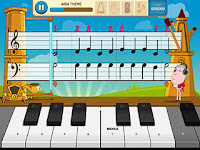
Speaking of fun features, you can connect an external device directly like an iPad or laptop computer using the AP-710 high speed class
compliant USB MIDI connection which allows for instant connection with
external computer devices without the need of downloading drivers or
having to convert a MIDI signal to USB. Since kids are growing up in the
“iPad world” I recommend to all piano students that they utilize the
exciting Apps available for tablets (and iPad in particular) to enhance
their playing and practice experience which will make them better
students and better musicians overall. Besides that, it’s super cool to
do this and when you’ve experienced the interaction of the Casio AP-710 with
an iPad (or Android) tablet and what it can musically and educationally do for you and your family, you’ll
be amazed at all the possibilities!
INSTRUMENT SOUNDS, LAYER, SPLIT & HALL EFFECTS
Other features of the AP-710 worth mentioning is more realistic instrument sounds (26 of them) which are taken from the higher priced Casio GP-310 Hybrid digital piano including noticeably improved strings,
harpsichord, organs, and electric pianos which can be split into two parts on the piano, layered/mixed together, and you can also
use the “duet” function that allows 2 people to play piano at the same time. Another interesting feature is call Hall Simulation
which gives the stereo acoustic piano sound more spacious surround effects such
as you would hear in a large concert hall or church where there is
natural echo that occurs when playing an instrument.
sounds and makes the piano more enjoyable to play depending on the kind
of music you like. I have heard these kinds of effects before in
other higher priced digital instruments and the AP-710 has them which is a bit unusual in this “lower price range” and they can make the piano sound even fuller and richer than it already is. These “hall effects” do add to the realism
of piano playing which is always a good thing.
HARDWARE CONNECTIVITY
The hardware “connectivity” on the AP-710 is very good. It incudes 1/4″ dual audio inputs and audio outputs as well as USB port to external device and also a thumb-drive port so that you plug in a USB thumb-drive to load and save audio wav files along with 2-track MIDI files. There are two 1/4″ stereo headphone jacks on the front
left side of the piano for easy access.
FINAL THOUGHTS
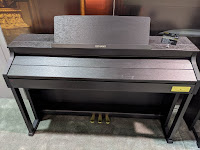 |
| AP-710 w/ closed key cover |
The bottom line is…this top of the line Casio Celviano AP-710 is a piano for people who want to focus on the piano playing experience in a medium price range (under $2800
) without too many “bells & whistles” to get in the way, but what it has in terms of technology is impressive. With a very attractive cabinet design that looks great and has a full back privacy panel, sounds big through its impressive internal speaker system, and uses a proprietary piano sound engine designed in part by the Bechstein grand piano company in Germany, the AP-710 is right a the top of my recommendations in its price range under $3000, especially given the fact that it’s just $2799. Along with a big factory warranty of 5 years parts & labor with in-home service and a matching Casio height adjustable bench, which no other manufacturer offers in this price range, it’s a complete package that would be excellent for anyone looking for a more upgraded digital piano at a very reasonable price.Finally, don’t let the name “Casio” fool you into believing that this model cannot compete and surpass the traditional piano names of Yamaha and Kawai with a digital piano in this price range. Casio is a premier developer and producer of innovative and high quality digital computer technology for many, many decades. The people who work for that company’s “digital piano & keyboard division” are top notch musicians and piano players so they definitely know what they are doing. Plus, the Casio company has produced this model in conjunction with the European German grand piano company Bechstein, which is no small thing. I think the biggest problem you’ll have in getting one is hopefully being able to find one available since they are in demand along with product shortages these dys because of the worldwide computer chip shortage.
If you want more info on new digital pianos and LOWER PRICES than internet discounts, please email me at tim@azpianowholesale.com or call direct at 602-571-1864 before you buy anything anywhere.




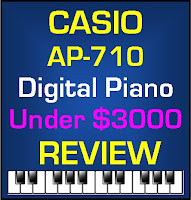
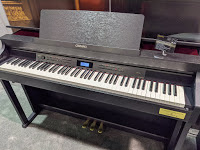
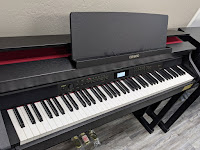
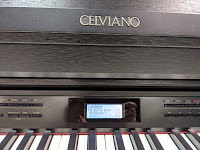


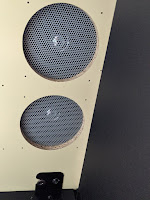


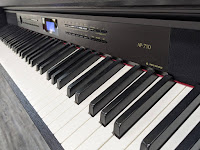
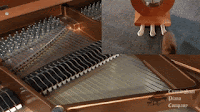



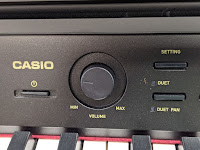










Hi Tim, I am in the process of moving out of my parents house and into a new condo which means I have to make the transition from my Yamaha T118 Acoustic Upright to a digital piano. I spent a couple hours at a local piano dealership today and I absolutely loved the new Casio DP603, especially since my new condo is going to be tight on space. What are your thoughts on the new Roland DP603/HP603/HP605 versus the Casio AP650/AP700. I like the idea of being able to open up the top of the Casio but I have a feeling that I'm going to be using headphones 95% of the time. I was not a fan of the new Yamaha Arius 163 and I even preferred the Roland over the Yamaha CLP 535/545. It seems like the Roland's are all identical when using headphones as the differences are all in the speakers and cabinetry and I'm assuming that is the same case for the Casio AP650/700. I'm going to try and find a local dealership that has the Casio's to test out but I would greatly appreciate it if you could give me your opinion since you've had the opportunity to try out so many different brands/models. I would say that I play classical music 80% of the time (Chopin/Beethoven/Debussy are my favorite).
Although, I’ve never been serious about learning to play the piano, I owned the Yamaha DGX 202 portable keyboard years ago and really enjoyed it. Having recently decided to take learning seriously, I purchased the relatively new Casio AP-710. For digital pianos in this price range, the AP-710 offers more premium features than its main competitors. With gorgeous looks, great sound, and a powerful speakers system, the AP-710 is truly worthy of its flagship status. Although not perfect (and what digital piano is?), this piano is the ideal companion for anyone desiring to become a serious player some day. I hope Casio releases a compatible Chordana App for this digital piano soon to make learning even more fun. I’m sure the time will come when my improving skills will outgrow this piano. Until then, I absolutely love my Casio Celviano AP-710 and highly recommend it to anyone looking to invest on a quality digital piano. My thanks to Tim for his expert advice, which was crucial in my decision to purchase this particular model.
If you could only get one between the following, which one would you get (I’m aware some are more affordable so that’s something to take into account as well).
– Kawai CA49
– Kawai CN39
– Yamaha Clavinova CLP 735 (or possibly 635?)
– Casio AP710 (which to my husband is the least aesthetically pleasing and considering this will also be a major furniture piece in our living-room, that’s also important.
– Roland HP702
– Casino AP470 (much cheaper option and wondering if it’s still good and maybe not worth spending the additional $1000 to get the above pianos)
Thanks in advance.
how will you compare casio ap650 vs ap710
thanks in advance
I got clp 735 when I had the same questions as you.